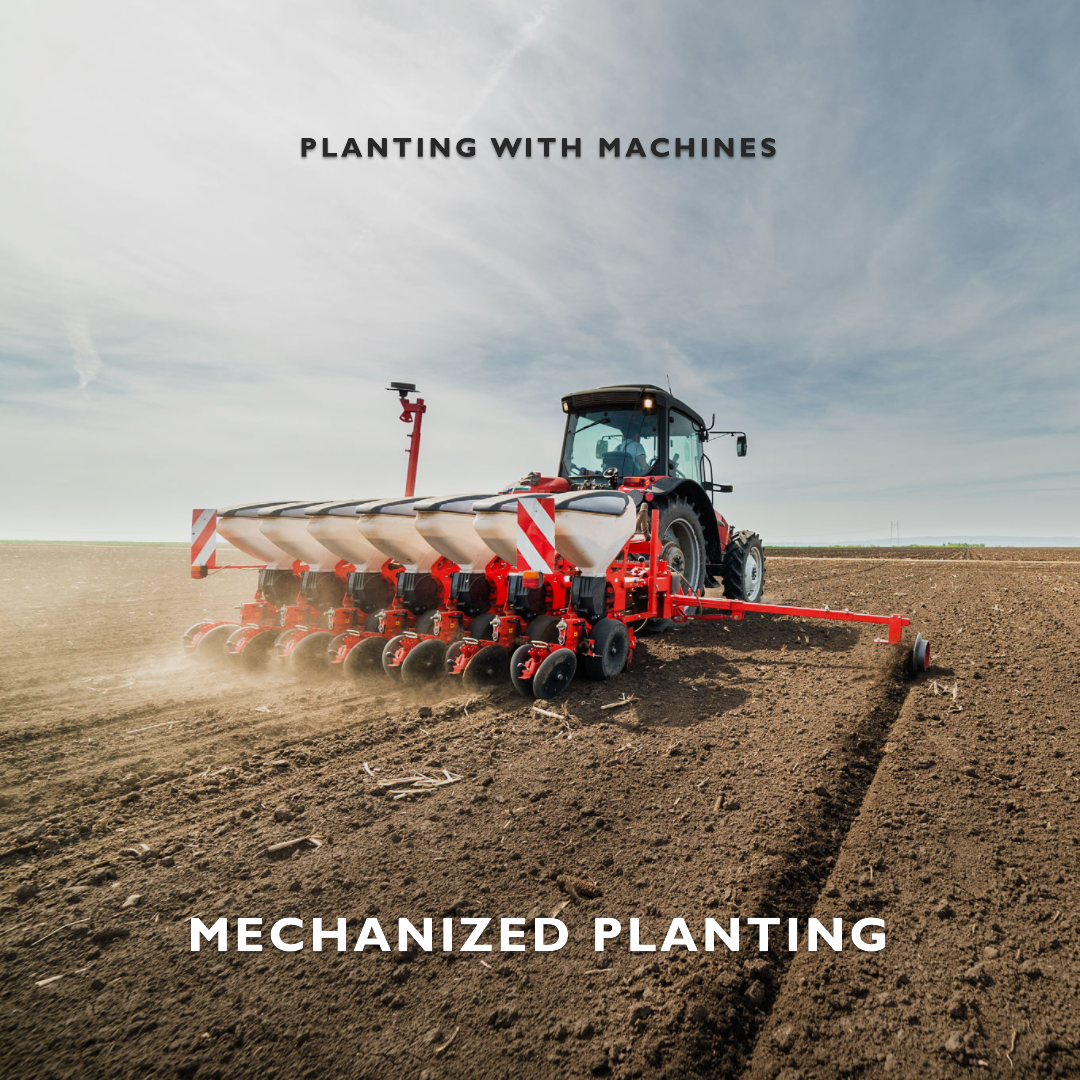Read More Technology
MECHANIZED

Mechanized planting refers to using machines or equipment to plant seeds or seedlings in the ground, as opposed to manual planting by hand. Mechanized planting can significantly increase efficiency, reduce labor costs, and improve planting accuracy, making it an essential tool for modern agriculture. Here are some steps to mechanize planting:
1. Select the right equipment
The first step is to choose the right planting equipment based on your specific needs and the type of crops you are planting. Some common types of mechanized planting equipment include seed drills, air seeders, transplanters, and precision planters.
2. Prepare the land:
Before mechanized planting, it is crucial to prepare the soil to ensure optimal conditions for crop growth. This may involve tilling the soil, adding amendments, and controlling weeds. Depending on the equipment you are using, you might need to create seedbeds or rows.
3. Calibrate the planter:
Proper calibration of your planting equipment is essential to ensure accurate seeding rates and correct seed placement. This includes adjusting the seeding depth, spacing, and seed metering to match the requirements of the crop you are planting. It's important to consult the manufacturer's guidelines for specific calibration instructions.
4. Load the seeds or seedlings:
Fill the planter's seed hoppers or trays with the appropriate seeds or seedlings. Make sure to handle the seeds carefully to avoid damage, and ensure that the seed metering system is functioning correctly.
5. Operate the planter:
Once the planter is set up and calibrated, begin the planting process by driving the tractor or machine at the recommended speed across the field. Monitor the planter's performance throughout the process, and make any necessary adjustments to ensure proper seed placement.
6. Maintain the equipment:
Regular maintenance of your planting equipment is essential for optimal performance and to prolong its lifespan. This includes cleaning, lubricating, and inspecting the planter for wear and tear or damage after each use.
7. Evaluate planting results:
After planting, it's important to assess the performance of the mechanized planting process. This may involve monitoring seed germination, crop establishment, and stand uniformity. If necessary, make adjustments to the planter settings or operating practices to improve results in future planting operations.
By following these steps and continually refining your mechanized planting practices, you can achieve more efficient, accurate, and cost-effective planting, ultimately leading to higher crop yields and better farm productivity.